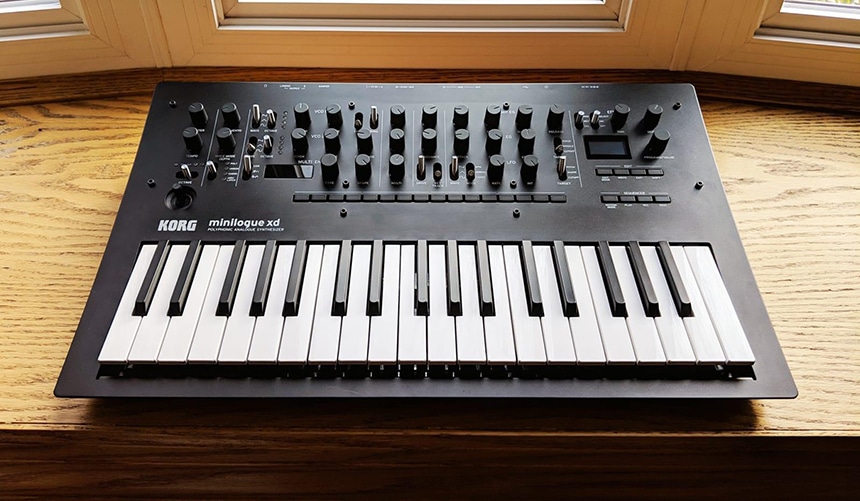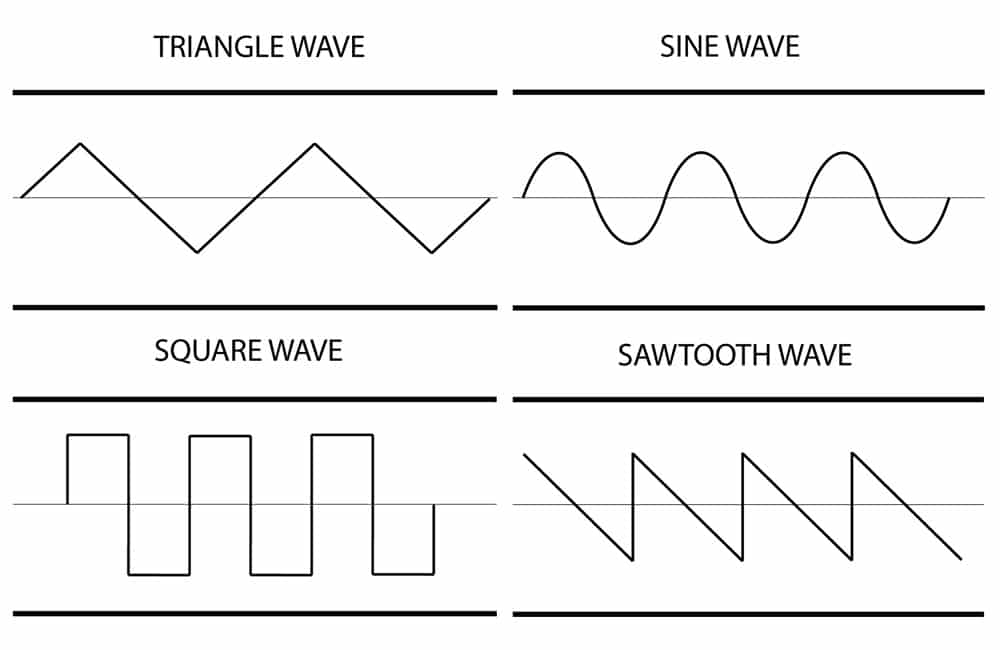If you are new to the world of music production and are still in your learning phase, you may be wondering how do synthesizers work? The impact synthesizers have had on modern music is hard to measure, but it’s safe to say they have completely revolutionized the way it is produced.
You will be surprised to learn that many of your favorite artists rely on synthesizers to make music. Synthesizers are now heavily used in the following music genres; hip-hop, rock, and EDM. You should also know that synth has also spread to other genres such as country, folk, and jazz music.
Many artists make use of synthesizers for live performances, and this reflects how it has changed the way live music is conducted. We are going to cover in great detail everything you need to know about synthesizers. By the end of this article, you can expect yourself to become an expert in synthesizers!

It’s important to start at the basics. Synthesizers (more commonly known as synths) are electronic musical instruments. They are unique from traditional instruments as they rely on analog and digital processing to produce sound. They make music producers’ lives easier by emulating the sound of an acoustic instrument.
The best thing about synthesizers is that they give artists and producers a lot of room to experiment and create new types of sounds. They allow you to mix existing sounds and add new sounds to produce something that is original and unique. Synthesizers have allowed artists to have more room to experiment and push the boundaries of their genres.
Synthesizers are an important element in the current music industry, and you can find traces of synth in most songs. You may be wondering what role synthesizers play in the larger practice of music production. As an aspiring music producer or someone curious about the world of music production, it is imperative for you to understand the role synthesizers play in music production.
Synthesizers have been playing an important role in music production for some time now. As discussed above, synthesizers are electronic instruments that create sounds.
They have also become a part of live performances and have allowed artists to create their unique sound and present their music in its full glory to their audiences.
There are many different types of synthesizers (ranging from analog to digital etc.), and most music producers make use of them in some capacity to produce unique sounds.
In order to understand synthesizers better, you need a rundown on the basics of synth sounds.
Oscillators are a fundamental element of synth sound. What they essentially do is produce waveforms. If you’re wondering what a waveform is, it is simply the shape that comes into form by different points to make a sound.
Waveforms can be modified and tweaked based on three aspects:
When it comes to waveshapes, each shape serves a different function and produces a different sound:

You may have heard of the term “timbre” in the context of music production. When the sound produced through the oscillator of a synth and the harmonic series come together, they produce the sonic element of sound which we refer to as timbre.
Timbre defines what makes each sound distinct based on pitch, loudness, and tonal qualities. Playing around with timbre allows producers to experiment and create unique sounds. The harmonic aspect can also be modified in the filter component of a synth. This component is also known as a VCF section.
There are basically 4 main settings for the harmonic series and these include:
Envelopes are also a key component of synths. They allow you to shape the waveform using different tools and parameters which include:
While synth sound can be complicated to understand and master, this short rundown of some of its key components gives you a basic understanding through which you can explore the world of synth sounds further.
Let’s get into the nitty-gritty of synth. This section will be exploring the different types of synth and the science behind how they work. This will also help you understand which synthesizers work best for you as a producer, especially if you are new to the world of music production.
Additive synthesis involves running waveforms through filters and other effects to combine them and create a completely different sound. This process allows you to make unique and complex harmonies and tones that elevate your overall music.
In contrast, subtractive synthesis works in the exact opposite way. It essentially subtracts or removes harmonics from the original waveform in order to create a new sound. So you basically use a filter to remove frequencies from the wavelength and produce something different.
So additive and subtractive synthesis basically involves taking the raw sound you produce and either adding or removing it to create a completely new and unique sound. By removing and adding synths you can create an uncountable number of sounds. There is no limit to your creativity!
Tracing the history of synth in music production shows that modular synthesizers have been around for a long time!
Here’s something you should know: the first modular synthesizer was created in 1950 in Germany. So, how do modular synthesizers work?
Modular synthesizers basically require you to connect or ‘patch together’ different modules This allows for a lot of customization and allows you to create a synthesizer that fulfills your specific needs.
Some common modules that producers ‘patch’ together are oscillators, filters, amplifiers, and envelope generators. This helps create a standard modular synthesizer. Modular synthesizers had always been costly and bulky. They were also less popular as it becomes hard to recreate an exact ‘patch’.
However, some producers continue to use modular synthesizers as they allow for more variation and greater room for experimentation. Among these, one of the favorites is the Behringer 2600 Blue Marvin Limited-Edition Analog Semi-modular Synthesizer.
Check out these excellent modular synthesizers if you are looking to learn more about modular synthesizers and especially if you want to purchase one! This blog presents 5 great options that have been curated by industry experts.
Analog synthesizers are some of the earliest synthesizers and date back to the 1930s. However, even though they go way back, this does not at all mean they are obsolete! So, how do analog synthesizers work?
Analog synthesizers create sounds through the manipulation of electric voltages. They have special oscillators that allow you to change and shift the shift of the voltage to produce a specific frequency. This frequency produces a waveform which you can process in the synthesizers with other tools and modules.
The best part is that the oscillator is easy to control and comes with keys in the form of a keyboard or even a pitch wheel. After you have produced the initial sound, it will be processed in a filter where you can manipulate the pitch and frequency of the sound.
One of the last steps in an analog synthesizer includes processing it through an amplifier where you can control the volume and intensity of a sound.
While analog synthesizers became less popular after the advent of digital synthesizers, they are still used by newcomers and producers on a budget.
In case you are looking to learn more about analog synthesizers, you can read about them here. This guide covers them in great detail and even looks at some great options you could buy.

Digital synthesizers emerged in the late 70s. They were made using computers and are also referred to as desktop synthesizers. They rely on Digital Signal Processing (DSP) to make a sound. DSP refers to the signal processing on advanced processors and computers. It allows for a much more advanced processor compared to analog processors.
Now, how do desktop synthesizers work? Similar to analog synthesizers, digital synthesizers have oscillators that the producer uses to create different sounds by using additive and/or subtractive synthesis.
One of the main things that set digital synthesizers apart is that they have a unique circuit board that relies on preprogrammed processors and algorithms. These processors use digital language to convert binary numbers into soundwaves.
Digital synthesizers are now available in a variety of forms. Some are available in the form of devices that you can attach to your computer and then control and process using your desktop. Technological advancements have also created synthesizers that essentially exist in the form of software programs!
You can easily use these software programs with your computer’s existing hardware. The advent of software synthesizers has completely revolutionized the world of music by making music production more accessible so that you can even do it from the comfort of your room, using your personal computer and digital synthesizer software!
If you have made it to the end of this article, you now have a basic overview of what synth is and how synthesizers work. From the basic analog synthesizers to the customizable modular synthesizers and now to the existence of desktop synthesizers that are essentially software, the world of the synth has come a long way.
The type of synth you use can define your music and style. As a beginner, you can consider the options compiled here as they are known to be beginner-friendly. They will help you ease into the world of music production.
Some music producers choose their synthesizers based on the type of controller, so in case you are looking to buy a keyboard synthesizer, you can look at some of the 10 best keyboard synthesizers.
As an aspiring music producer or artist, you should continue to learn about synth and how you can use it to elevate your music. There is a lot to explore regarding synth, its origins, and its functions and this article has given you the basic tools to continue your learning process.